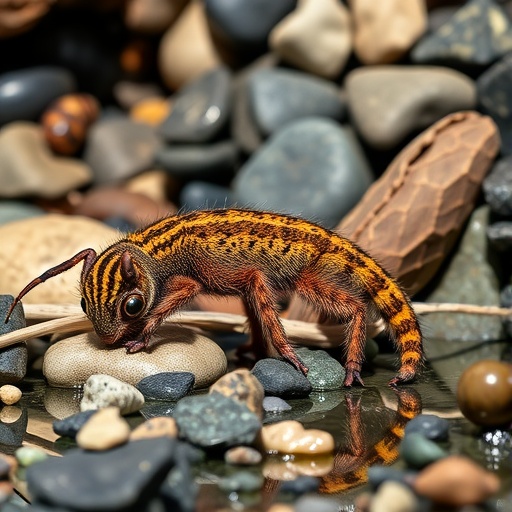
Oceanic islands have long been recognized as natural laboratories for evolutionary processes, fostering unique biodiversity through relative geographic isolation and subsequent speciation. The volcanic archipelagos of Macaronesia—comprising the Azores, Madeira, Selvagens, the Canary Islands, and Cabo Verde—represent such hotspots where endemic species have flourished. However, the same isolation that promotes speciation renders these ecosystems particularly fragile and susceptible to environmental disturbances. In a comprehensive synthesis recently published in PNAS Nexus, researchers Jairo Patiño, José María Fernández-Palacios, and colleagues meticulously document the terrestrial extinctions that have unfolded across Macaronesia, revealing the catastrophic consequences of human colonization and subsequent ecosystem disruptions.
At the core of this investigation lies an extensive compilation of 220 documented extinctions among Macaronesian terrestrial biota, amounting to approximately 3.1% of the region’s endemic species. This comprehensive account encompasses a broad taxonomic range, delineating losses among 111 land snail species, 55 arthropods, 27 birds, and 15 reptiles—including several now-extinct giant tortoise species. The magnitude of avian extinction is especially noteworthy, with half of the region’s endemic bird species no longer extant. These findings underscore the immense vulnerability of island faunas to anthropogenic pressures, despite the evolutionary novelty and adaptive intricacy developed in such isolated environments.
Islands, while offering sanctuaries for endemism, possess inherently limited spatial extents, which constrain population sizes and reduce genetic diversity. Consequently, endemic species often exhibit specialized ecological niches and attenuated defenses against novel predators and competitors. This intricate balance was profoundly disrupted following human arrival, particularly with the 15th-century incursions of Portuguese and Castilian expeditions. Colonization introduced a suite of invasive vertebrates, such as rats, cats, and goats, which precipitated habitat degradation and predation pressures previously absent from these isolated ecosystems. The study attributes roughly half of the recorded extinctions directly to these anthropogenic introductions and habitat transformations.
.adsslot_TsDXmqHj21{width:728px !important;height:90px !important;}
@media(max-width:1199px){ .adsslot_TsDXmqHj21{width:468px !important;height:60px !important;}
}
@media(max-width:767px){ .adsslot_TsDXmqHj21{width:320px !important;height:50px !important;}
}
ADVERTISEMENT
Pre-human extinctions, though less frequent, were nonetheless present and are hypothesized to have resulted from natural climatic fluctuations and periodic volcanic activity pervasive in the region. However, the extinction rate post-human colonization accelerates dramatically, exceeding the pre-human baseline by more than twelvefold. This exponential increase illuminates the profound impact of human-mediated environmental change on the pace and scale of biodiversity loss.
Among the lost avifauna, detailed reconstructions highlight several emblematic species, shedding light on the specialized evolutionary trajectories curtailed by extinction. The São Jorge rail (Rallus nanus), a flightless bird endemic to São Jorge Island in the Azores, vanished due to predation from introduced mammals and habitat alteration. Madeira Island’s unique Madeiran Scops Owl (Otus mauli), vividly reconstructed by artists from fossil and subfossil evidence, signifies one of the remarkable losses in insular raptor diversity. Similarly, the slender-billed greenfinch (Chloris aurelioi) from Tenerife and the São Vicente quail (Coturnix centensis) from Cape Verde both embody the vulnerability of island passerines and ground birds to habitat destruction and invasive species.
Interestingly, while faunal extinctions have been extensive, the study reveals a less dramatic attrition among endemic plants, with lichen and fungi exhibiting no recorded extinctions—a result likely biased by insufficient taxonomic surveys. This dichotomy suggests differential resilience or detection bias across biological kingdoms, warranting intensified research efforts and conservation priorities for non-vertebrate taxa. The persistence of flora amidst faunal collapse also emphasizes the complex interdependencies within island ecosystems and the cascading effects of faunal loss on vegetation community dynamics.
The synthesis further integrates paleoecological and archaeological evidence, providing temporal context to extinction events. By juxtaposing the timing of species disappearances with known episodes of human colonization and environmental upheavals, the authors elucidate causal linkages and underline the anthropogenic origins of modern biodiversity crises. This integrative approach refines our understanding of island extinction chronology and sensitizes conservation strategies to past biogeographic trajectories.
In light of these findings, the authors advocate for immediate conservation interventions aimed at halting ongoing extinction trajectories in Macaronesia. Habitat restoration, invasive species management, and strengthened biosecurity protocols emerge as pivotal measures to preserve extant endemic populations. Given the fragile equilibrium of island ecosystems, such proactive stewardship is critical to maintain not only biodiversity but also the ecological functions and evolutionary potentials embodied therein.
The study additionally serves as a cautionary exemplar for island conservation worldwide. With oceanic islands serving as repositories for evolutionary innovation yet simultaneously being extinction epicenters, the balance between human development and biodiversity preservation remains precarious. Effective policy frameworks must integrate scientific insights from extinction syntheses such as this to curtail anthropogenic impacts and foster sustainable coexistence with unique island biota.
Moreover, through detailed taxonomic cataloging and spatial analysis of extinction patterns, the research enhances predictive models for future biodiversity changes under varying human land-use and climate scenarios. This forward-looking dimension reinforces the critical link between historical extinction knowledge and adaptive conservation planning in the Anthropocene epoch.
In conclusion, the comprehensive synthesis presented by Patiño, Fernández-Palacios, and colleagues paints a sobering portrait of the extensive terrestrial extinctions within Macaronesia, largely driven by human colonization and environmental disruption. The loss of over two hundred species across multiple taxa underscores the fragility of island ecosystems and the accelerating threats posed by invasive species and habitat degradation. By contextualizing these extinctions within broader ecological and evolutionary frameworks, the study not only enriches scientific understanding but also galvanizes urgent action to safeguard the remaining biodiversity of these irreplaceable natural laboratories of life.
Subject of Research: Terrestrial species extinctions in the Macaronesian Islands and their relation to human occupancy
Article Title: A synthesis of terrestrial species extinctions in the Macaronesian Islands and their correspondence with human occupancy
News Publication Date: 5-Aug-2025
Image Credits: Pau Oliver
Keywords: Extinction, Islands
Tags: anthropogenic pressures on wildlifeavian extinction ratesconservation of island speciesecological consequences of colonizationendemic species lossfragile island ecosystemshuman impact on ecosystemsisland biogeographyMacaronesia biodiversityspecies extinctionterrestrial extinctionsvolcanic archipelagos





